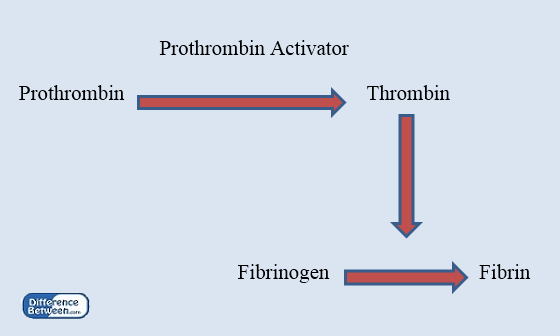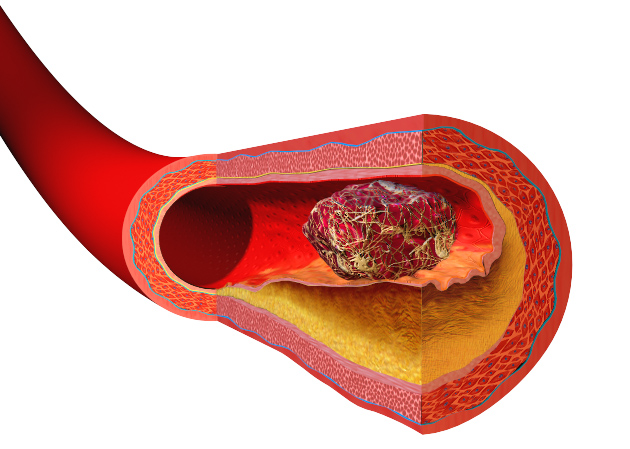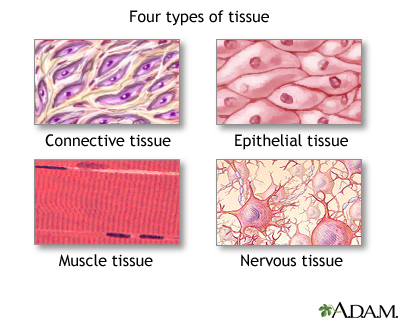Difference Between Blood Clot and Tissue
Table of Contents
Key Difference – Blood Clot vs Tissue
A blood clot is a meshwork of fibrin fibers running in all directions and entrapping blood cells, platelets and plasma. Tissue, on the other hand, is a group of cells organized to perform a specific task is known as a tissue. Different tissues get together to form an organ. In that sense, a blood clot can actually be considered as a tissue product. Although tissues are a collection of cells, blood clots are a collection of various connective tissue components that are arranged for the entrapment of cells leaking out through a vascular defect. This is the key difference between blood clot and tissue.
CONTENTS
1. Overview and Key Difference
2. What is a Blood Clot
3. What is a Tissue
4. Similarity Between Blood Clot and Tissue
5. Side by Side Comparison – Blood Clot vs Tissue in Tabular Form
6. Summary
What is a Blood Clot?
A blood clot is a meshwork of fibrin fibers going in all directions and entrapping blood cells, platelets and plasma. Blood clots are actually a protective mechanism used by the body to prevent the loss of blood when a blood vessel is ruptured or when the blood itself is damaged by some injurious agents.
When there is damage to a blood vessel, a pathway called extrinsic pathway is activated. When there is a blood injury, it is the intrinsic pathway that is activated. Both these pathways are cascades of chemicals that ultimately form the prothrombin activator.
Prothrombin activator activates fibrinogen into fibrin through several steps:

Under normal conditions, blood clots are not produced within the circulatory system due to the presence of few counter mechanisms specifically aimed at preventing the unnecessary clotting of blood.
Mechanisms that Prevent Blood Clotting
- Endothelial surface factors
The smoothness of the endothelial surface helps to prevent the contact activation of the intrinsic pathway. There is also a coat of glycocalyx on the endothelium, which repels clotting factors and platelets, preventing the formation of a clot.
The presence of thrombomodulin, which is a chemical found on the endothelium, also helps to counter the clotting mechanism. Thrombomodulin binds with thrombin and stops the activation of fibrinogen.
- Anti-thrombin action of fibrin and antithrombin iii.
- Action of heparin
- Lysis of blood clots by plasminogen

Figure 01: A Blood Clot
Although these countermeasures are present, blood clots are formed unduly inside the vessels.When such a clot gets lodged in the blood vessels, it compromises the blood supply to the muscles of that particular area.This leads to the accumulation of metabolic waste products and the lack of oxygen gives rise to ischemia.
What is a Tissue?
A tissue is a group of cells organized to perform a specific task. Different tissues get together to form an organ.
The cells that make specific tissues have unique adaptations to work efficiently in order to maintain their structural integrity and functional capacity at optimum levels.

Figure 02: Types of Tissues
Few examples of body tissues are mentioned below.
- Nervous tissue → coordinates all the metabolic activities and body
- Muscle tissue and other connective → Involved in the movements of the body and maintains the structure and stability of body organs
- Epithelial tissues → Cover the surfaces of the body
What is the Similarity Between Blood Clot and Tissue?
- Cells are involved in the formation of both tissues and blood clots.
What is the Difference Between Blood Clot and Tissue?
Blood Clot vs Tissue | |
| A blood clot is a meshwork of fibrin fibers running in all directions and entrapping blood cells, platelets and plasma. | A group of cells organized to perform a specific task is known as a tissue. Different tissues get together to form an organ. |
| Collection of Cells | |
| A blood clot is not a collection of cells. | A tissue is a collection of cells. |
| Functions | |
| The function of a blood clot is to prevent the loss of blood. | Functions of the tissues vary from one type to the other. |
Summary – Blood Clot vs Tissue
A blood clot is a meshwork of fibrin fibers running in all directions and entrapping blood cells, platelets and plasma whereas a tissue is a group of cells organized to perform a specific task. The main difference between blood clot and tissue is that a blood clot contains a collection of connective tissue components, but a tissue contains a collection of cells.
Reference:
1. Hall, John E., and Arthur C. Guyton. Guyton and Hall textbook of medical physiology. 12th ed. Philadelphia, PA: Elsevier, 2016. Print.
2. 2. Kumar, Vinay, Stanley Leonard Robbins, Ramzi S. Cotran, Abul K. Abbas, and Nelson Fausto. Robbins and Cotran pathologic basis of disease. 9th ed. Philadelphia, Pa: Elsevier Saunders, 2010. Print.
Image Courtesy:
1. “Blausen 0088 BloodClot” By Blausen.com staff (2014). “Medical gallery of Blausen Medical 2014”. WikiJournal of Medicine 1 (2). DOI:10.15347/wjm/2014.010. ISSN 2002-4436. – Own work (CC BY 3.0) via Commons Wikimedia
2. “Four types of tissue”By Medline Plus– (Public Domain) via Commons Wikimedia
ncG1vNJzZmivp6x7pbXFn5yrnZ6YsqOx07CcnqZemLyue8OinZ%2Bdopq7pLGMm5ytr5Wau26uy6imnWWToby1ecCnm2auo2LBqr%2FSrpxo